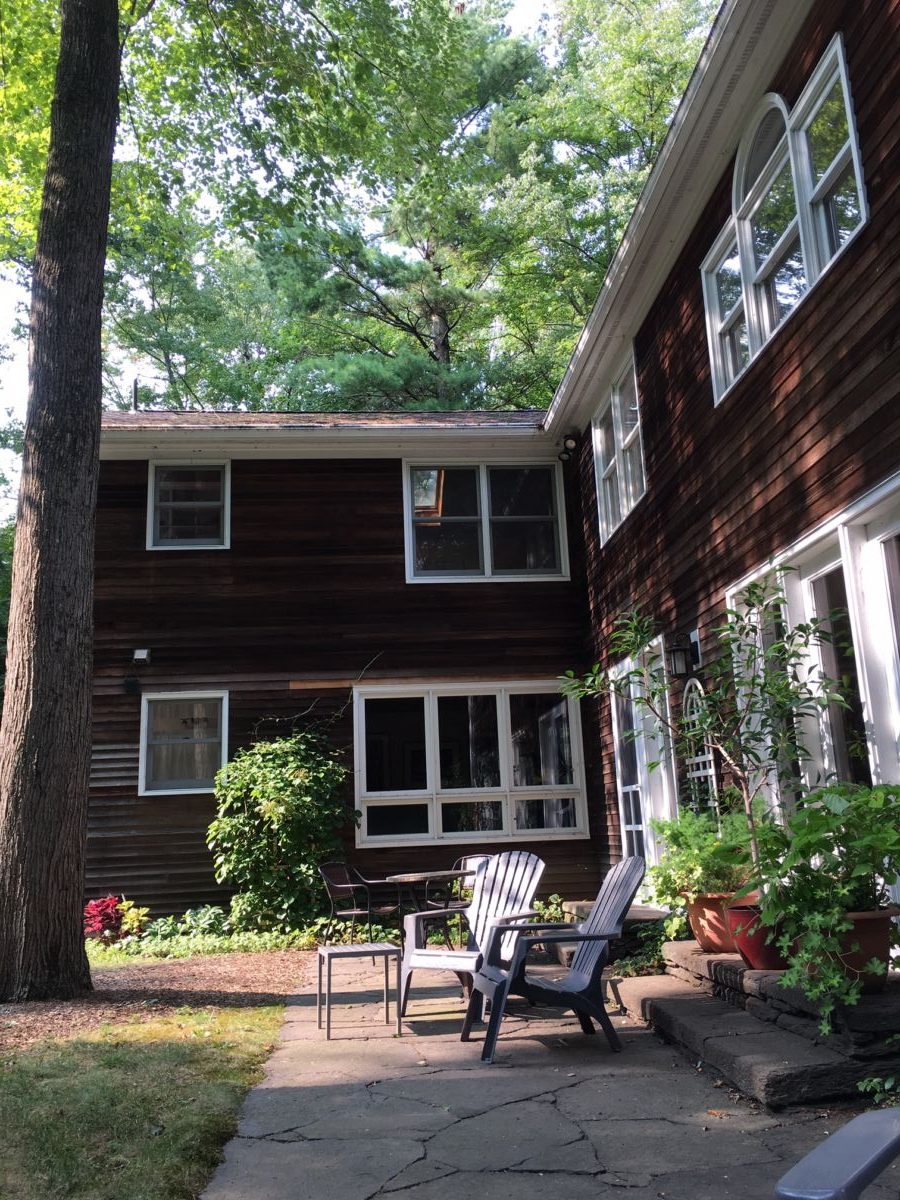Years ago, my friend Susan took a class of college kids off to visit Middleton Plantation, outside Charleston. One of the few plantations not to be burned by Sherman’s troops, it was probably a terrible place for the slaves who worked the land, but now it’s lovely and quiet, a mansion of mellow brick set among daffodils and azaleas. One of the students on the tour gazed meditatively over the house and garden, drew in a breath of great satisfaction, then murmured, “One day they will realize that all this is rightfully mine.” Susan and he laughed.
When Susan told me the story, I laughed, too. I recognized myself in her student. Every time I tour a historic home—whether it’s the elegant Biltmore estate in North Carolina or Wordsworth’s poky Dove Cottage, in England’s Lake District—I imagine myself living in it.
As I walk through whatever old house and grounds I’m touring, I downplay the problems. I don’t want to cook in dark kitchens, feed fireplaces constantly during the winter, or empty chamber pots, so I let myself forget those parts of living in such a house. In other words, I imagine myself being of the upper class. (In this, I’m assisted by much of the literature I’ve read.) I’m not consumed by envy, jealousy, or even a deep yearning. I’m just indulging myself in a fantasy rooted in my love of homes and landscapes—an idle fancy that’s I know is mildly ridiculous.
Lots of people—particularly lots of women, particularly women who watch HGTV—flirt with this fantasy. (I remember my friend Maddy telling a group of us about seeing the movie Something’s Gotta Give. The female protagonist, a successful dramatist, lives in a light-flooded beach house in the Hamptons. “I don’t want Jack Nicholson,” Maddy sighed. “I just want that house.”)
Fictional characters do, too.
Take, for example, Elizabeth Bennet, of Pride and Prejudice. On a tour of Pemberley with her aunt and uncle, Lizzy stands at the dining room windows, looking out over a green, hilly landscape. “And of this place,” she reflects, “I might have been mistress!” Only the thought that Darcy would not welcome her aunt and uncle to Pemberley keeps her from a pang of regret. Later, after it turns out that Darcy does welcome her aunt and uncle—and moreover has proposed and been accepted—Lizzy’s sister Jane asks her how long she has loved Darcy. Elizabeth answers, “It has been coming on so gradually that I hardly know when it began. But I believe I must date it from my first seeing his beautiful grounds at Pemberley.” Jane entreats her to be serious. But of course Elizabeth is being serious, at least in part. She’s marrying Darcy for himself, not for Pemberley. But Pemberley is not irrelevant.
Even at museums, I can drift into fantasies of ownership and redecoration. The first time we visited MassMOCA, a modern art museum in an old factory, I wandered around, impressed b the brick walls, high ceilings, and enormous windows. Bored by the conceptual art on display, I set about figuring out where out in this wonderful, sunlit space the kitchen would go. And the living room. And the bedrooms. Only the absence of paper kept me from sketching a layout.
David Sedaris, in his inimitable way, goes even further. In his 2004 essay “Possession” (The New Yorker) he tells us that he and Hugh have been apartment-hunting in Paris, aided by a real estate agent whom he calls “the grandmother.” Just to make sure they’re not making a mistake in choosing Paris, they decide to check out Amsterdam. By accident, they walk by the Anne Frank house and decide to go in. Once inside, Sedaris says, “I felt what the grandmother had likened to being struck by lightning—an absolute certainty that this was the place for me. That it would be mine. [. . . T]he part where Anne Frank and her family had lived, their triplex, was exactly the right size, and adorable, which is something they never tell you.” After he glances at a wall that he’s already planning to rip down, he heads “upstairs to the kitchen, which was eat-in, with two windows. I’d get rid of the countertop and of course re-do all the plumbing, but first I’d yank out the woodstove and reclaim the fireplace. ‘That’s your focal point right there,’ I heard the grandmother saying.” Remember—he’s in the Anne Frank house!
After indulging in these frenzies of imaginary redecorating, I return to my own home with great fondness. Here, in our Not-So-Little House in the Woods, is an antique poster from a coffee shop in Palo Alto; its sunny colors presided over many hours of studying for exams and writing a thesis. There in back is the stone terrace we put in a few years ago, shaded by two big maples, perfect for leisurely lunches. In front of the fireplace, the comfortable recliner we bought to celebrate my retirement. In my study, the books I taught, lined up in a Shaker bookcase. In the dining room, our wedding china, in a cabinet. Photos pretty much everywhere.
All of it just things, but things with memories and associations. Things that create a shelter and a nest for our lives. Things that turn our house into our home.

Laura and I visited Middleton In the 1980’s. It was unusual because there was no electricity. It had a different feel to the light and shadow, even during our afternoon tour. The Guide said the woman who inherited it lived in Charleston, and just visited it for outings. I was always glad I got to experience that.
And with luck, we’ll do our postponed tour of Biltmore together in a year or two!